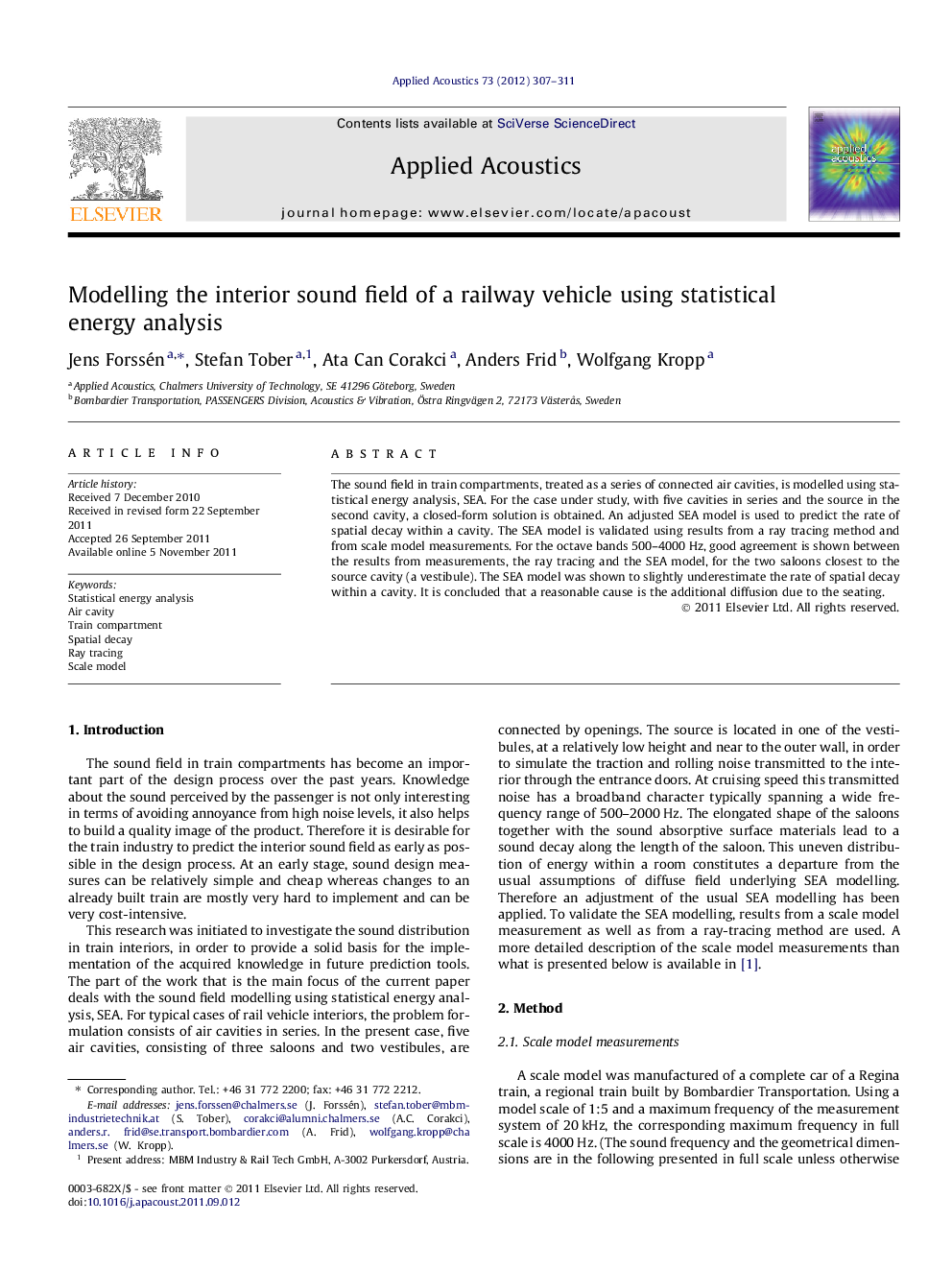| Article ID | Journal | Published Year | Pages | File Type |
|---|---|---|---|---|
| 761394 | Applied Acoustics | 2012 | 5 Pages |
The sound field in train compartments, treated as a series of connected air cavities, is modelled using statistical energy analysis, SEA. For the case under study, with five cavities in series and the source in the second cavity, a closed-form solution is obtained. An adjusted SEA model is used to predict the rate of spatial decay within a cavity. The SEA model is validated using results from a ray tracing method and from scale model measurements. For the octave bands 500–4000 Hz, good agreement is shown between the results from measurements, the ray tracing and the SEA model, for the two saloons closest to the source cavity (a vestibule). The SEA model was shown to slightly underestimate the rate of spatial decay within a cavity. It is concluded that a reasonable cause is the additional diffusion due to the seating.
